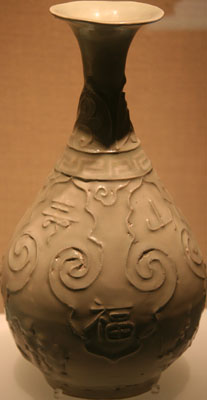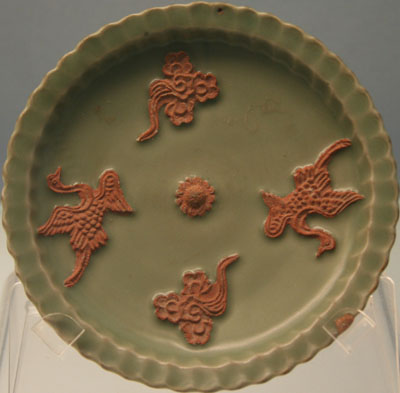Decorative Designs in Chinese Art 中国文物的纹饰
Porcelain 瓷器 Yuan Dynasty 元
Click on any word to see more details.
Yuan Dynasty 元
The well known blue and white porcelain 青花 was developed at Jingdezhen Kiln in the Yuan Dynasty (1279—1368). The blue color comes from use of an oxide with a high proportion of cobolt.
The pot below was created with a greenish-glazed white 青白釉 technique, developed at the Jingdezhen Kiln, where the piece is from. The characteristic of this technique is the intermediate color of the glaze between green and white. The design is a string bead design 串珠纹.

The flat pot below uses a dragon and phoenix design 龙凤纹.

The lotus design on the yellow-glazed plate below is abstract, reflecting a minimalistic taste among a certain class of people of the time.

To allow a colored design, the phoenix on the celadon plate below were attached after glazing.
Chinese
Pinyin English
